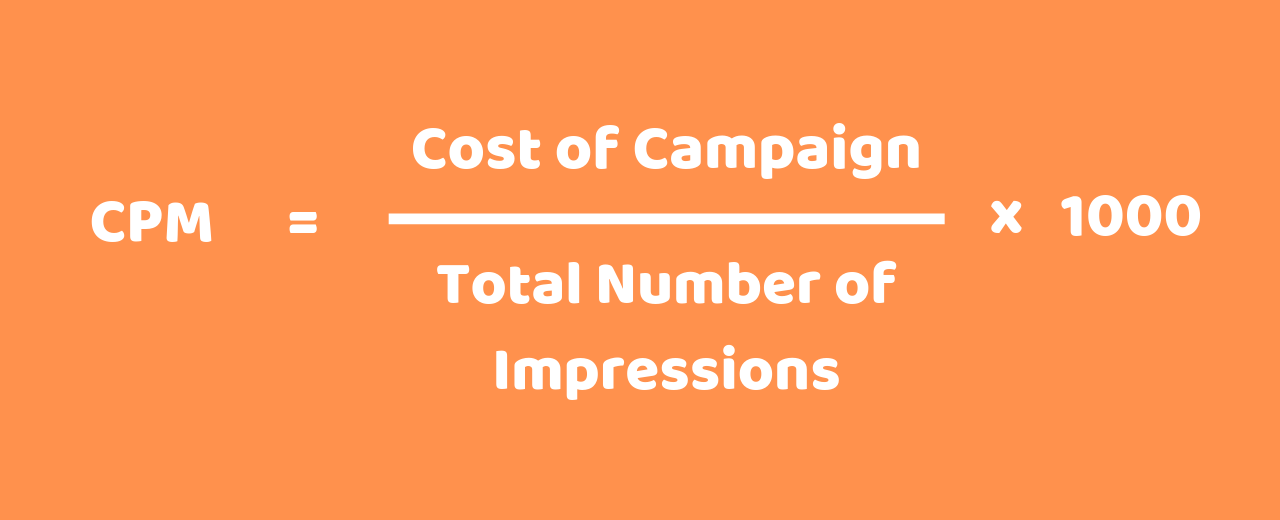
Although an impression measures the number of times a site displays the ad - it does not measure whether viewers clicked the ad. Advertisers pay website owners a pre-determined fee per one thousand ad impressions.

The method focuses on impressions - ad views - representing the number of views or engagements for a particular digital advertisement. Cost per thousand (CPM) is the most prevalent protocol for pricing ads in digital marketing.

It's conceivable that they could see your ad a hundred times or more and not once click on it. In other words, if an individual views your ad ten or twenty times in a day, each of those views, or impressions, accumulates toward your total CPM. Bear in mind, that a thousand impressions can rack up quickly, meaning that the publisher will charge you every time every member of the audience views your ad. Example: Assume you spend 1,000 on advertising and get 100 people to visit your website. In other words, if you're confident that your ad has the potential to drive click-throughs, you could stretch your ad budget further by opting for the CPM model. Cost per Page Visit: You are more likely to use this type of conversion calculation if your goal is increasing brand awareness or your profits are based on visits, such as a blogger who sells ad space. eCPM (Effective Cost Per Mille/Effective Cost Per Thousand) takes into account all the different campaigns running on the publisher’s inventory, including CPM (cost per mille), CPC (cost per click), and CPL (cost per lead) campaigns. In this display advertising model on Google, you don't pay for clicks on your ad - as with Cost-Per-Click (CPC) - instead, you only pay for the number of times it is displayed. CPM represents the revenue publishers earn for every 1,000 website ad impressions. You read that correctly - even clicking "Skip video" after three seconds counts as a view. You can divide the total cost of the campaign by total numbers and multiply it by 1000 to calculate CPM for AdWords campaigns. Regarding video CPM, your video needs to play for at least two seconds to register as an impression. That, according to Google, qualifies as an impression. Google refers to it as viewable CPM - or vCPM - which means that at least 50% of your ad needs to display on screen for a minimum of one second. In CPM, the "M" stands for "mille," which is Latin for "thousand." Put simply, Cost per Mille (CPM) is the cost paid per 1000 impressions of your digital ads. For instance, if a web publisher charges $3.00 CPM, an advertiser pays the publisher $3.00 per 1,000 impressions of its ad. It's risky for the publisher, though, because they have to rely on the advertiser's ability to monetize the traffic.Cost Per Mille (CPM) - also known as cost per thousand - is a marketing metric denoting the cost of 1,000 advertisement impressions on a web page. Then you pay for the actual traffic you're getting and it's up to you how much value you'll extract out of it.Įven less risky is the CPA (cost per action) model, where the advertiser pays every time the user performs an action (registers, makes a purchase, etc.). You get a bit closer if you're basing the remuneration on clicks (the CPC - cost per click model). It's hard to tell how well the traffic will convert and no CPM calculator will tell you that.

It's loosely tied to value, so advertisers can't be sure how much value they're getting. The CPM model has the virtue of being very simple (in all regards – how easy it is to understand, implement, and bill) and clear to all parties. What may interest you more is one of the reversed equations:įor impressions (how many impressions you're going to get, given your budget): So the CPM formula is CPM = 1000 × cost / impressions.

Since CPM is the cost per thousand impressions, then you simply divide the cost by the number of impressions divided by a thousand. The formula for CPM is as simple as the concept behind it.


 0 kommentar(er)
0 kommentar(er)
